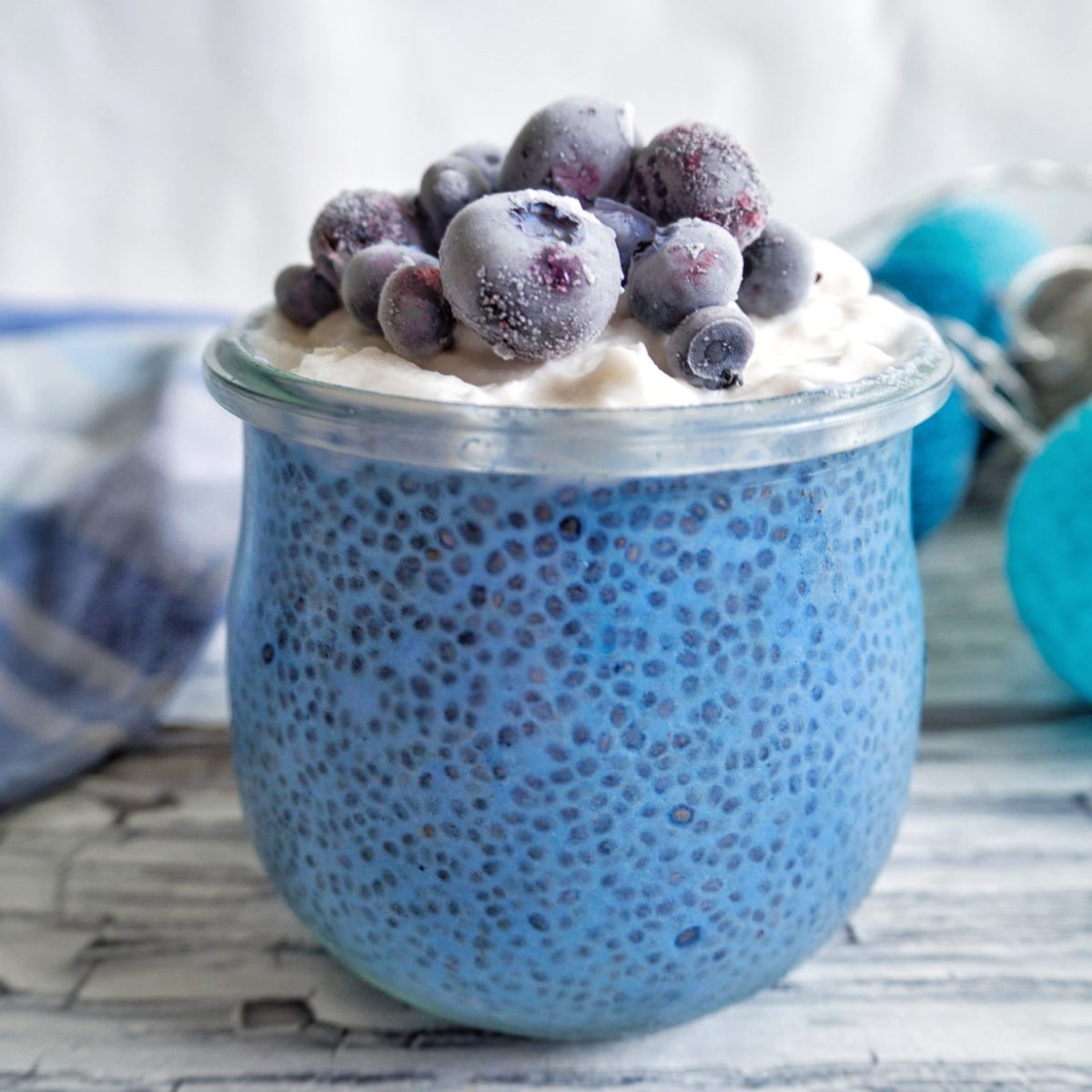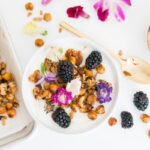Start your day with a vibrant burst of flavor and nutrition, even with allergies! This collection of allergy-friendly chia pudding recipes caters to various dietary needs, offering delicious and adaptable options for everyone. We’ll explore basic recipes free from dairy, nuts, and soy, then delve into exciting variations bursting with tropical fruits, juicy berries, or rich chocolate. Learn how to achieve the perfect creamy texture, adjust sweetness levels, and create stunning presentations with allergy-conscious toppings.
From understanding the foundational techniques to mastering advanced flavor combinations and visually appealing garnishes, this guide provides a comprehensive journey into the world of allergy-friendly chia pudding. Discover the nutritional benefits of each ingredient and learn how to troubleshoot common issues, ensuring a consistently delightful breakfast experience. Whether you’re a seasoned chef or a beginner in the kitchen, these recipes will empower you to create healthy and delicious chia puddings that are both satisfying and safe.
Allergy-Friendly Chia Pudding Toppings and Garnishes

Choosing the right toppings can elevate your allergy-friendly chia pudding from a simple breakfast to a vibrant and flavorful experience. The key is to select ingredients that not only complement the pudding’s mild taste but also offer additional nutritional benefits and textural contrast. Consider the overall balance of flavors and textures when selecting your toppings.
Allergy-Friendly Topping Options
The following table details five allergy-friendly topping options, highlighting their nutritional value and flavor profiles. These options are suitable for those with common allergies like dairy, gluten, soy, and nuts. Remember to always check ingredient labels to ensure they meet your specific dietary needs.
| Topping | Description | Nutritional Benefits | Flavor Profile |
|---|---|---|---|
| Fresh Berries (strawberries, blueberries, raspberries) | Sweet, juicy fruits bursting with color. | Rich in antioxidants, Vitamin C, and fiber. | Sweet and tart, with varying levels of sweetness depending on the berry. |
| Sliced Banana | Creamy, naturally sweet fruit. | Good source of potassium and fiber. | Sweet and subtly creamy. |
| Coconut Flakes (unsweetened) | Shredded coconut flesh, offering a delicate sweetness. | Source of fiber and healthy fats. | Slightly sweet with a delicate coconut flavor. Adds a pleasant chewiness. |
| Seeds (sunflower, pumpkin, hemp) | Small, nutritious seeds providing a variety of nutrients. | Excellent source of healthy fats, protein, and various minerals. | Subtle nutty flavors, varying slightly depending on the seed type. Adds a nice crunch. |
| Cocoa Nibs | Small, crunchy pieces of unsweetened chocolate. | Rich in antioxidants and fiber. | Intensely chocolatey and slightly bitter. Provides a delightful textural contrast. |
Impact of Toppings on Taste and Texture
Different toppings significantly influence the overall taste and texture of chia pudding. For instance, adding fresh berries provides a burst of juicy sweetness and a refreshing tartness that contrasts beautifully with the creamy pudding. Coconut flakes contribute a subtle sweetness and a pleasant chewiness, while seeds add a satisfying crunch and a boost of healthy fats and protein. Cocoa nibs introduce a rich chocolate flavor and a delightful textural contrast to the smooth pudding. The combination of flavors and textures can be tailored to individual preferences.
Visually Appealing Topping Combinations
Creating visually appealing topping combinations enhances the enjoyment of your chia pudding. Here are three examples:
Combination 1: Berry Bliss: This combination features a vibrant mix of fresh strawberries, blueberries, and raspberries atop a creamy chia pudding. The color palette is a stunning array of reds, purples, and blues, creating a visually captivating dessert. The textures are a delightful contrast between the smooth pudding and the juicy, slightly tart berries.
Combination 2: Tropical Delight: This combination showcases the creamy texture of sliced banana and the delicate sweetness of unsweetened coconut flakes against the backdrop of the chia pudding. The color palette is warm and inviting, with the soft yellows and whites of the banana and coconut complementing the subtle beige of the pudding. The textures contrast between the creamy banana, the slightly chewy coconut, and the smooth pudding.
Combination 3: Chocolate Crunch: This combination layers cocoa nibs and pumpkin seeds over the chia pudding, creating a visually appealing contrast of dark brown and light beige. The color palette is sophisticated and grounding. The textures are a pleasing combination of the smooth pudding, the crunchy cocoa nibs, and the slightly softer pumpkin seeds. The bitter-sweet chocolate pairs well with the subtle nuttiness of the seeds.
Recipe Modifications and Troubleshooting
Chia pudding, a delightful and versatile breakfast option, offers a canvas for culinary creativity. However, accommodating various dietary needs and achieving the perfect consistency requires understanding recipe modifications and potential troubleshooting strategies. This section provides guidance on adapting recipes for different dietary restrictions and resolving common issues encountered during preparation.
Adapting Recipes for Dietary Needs
Creating allergy-friendly chia pudding is often about thoughtful substitutions. For vegan options, ensure your chosen milk alternative (almond, soy, oat, etc.) is unsweetened and free of any allergens. Coconut milk, for instance, imparts a creamy texture and subtle sweetness. For gluten-free versions, simply ensure that any added ingredients, such as extracts or flavorings, are certified gluten-free. Low-sugar recipes can be achieved by reducing or eliminating added sweeteners and relying on the natural sweetness of fruits like berries or a touch of maple syrup. Remember to always check ingredient labels meticulously to confirm the absence of any allergens. A simple swap of regular milk for unsweetened almond milk, for example, can make a significant difference for those with dairy sensitivities.
Troubleshooting Common Chia Pudding Issues
Consistency is key to a perfect chia pudding. Understanding the factors influencing texture allows for easy adjustments.
- Problem: Pudding is too thick. This often results from using too much chia seeds or too little liquid. Solution: Add more liquid, a tablespoon at a time, stirring gently until the desired consistency is reached. Alternatively, if you prefer a thinner pudding from the start, reduce the amount of chia seeds used in the recipe.
- Problem: Pudding is too thin. This typically happens when using too little chia seeds or too much liquid. Solution: Add more chia seeds, a tablespoon at a time, and stir thoroughly. Let the mixture sit for at least 30 minutes, or even longer, to allow the chia seeds to fully absorb the liquid and thicken the pudding. Refrigerating the pudding for a longer period can also help achieve the desired consistency.
- Problem: Pudding lacks flavor. This might occur if the chosen milk alternative lacks inherent sweetness or if insufficient flavoring has been added. Solution: Experiment with different extracts (vanilla, almond, etc.), spices (cinnamon, nutmeg), or natural sweeteners (maple syrup, honey – if not restricting sugar) to enhance the taste profile. Using a naturally sweeter milk alternative, like coconut milk, can also contribute to a more flavorful pudding.
- Problem: Pudding is grainy. This can happen if the chia seeds haven’t been properly hydrated. Solution: Ensure the chia seeds are thoroughly mixed with the liquid and allowed to sit undisturbed for a sufficient amount of time (at least 2-4 hours, or preferably overnight) to fully absorb the liquid and soften. Using a whisk to stir the mixture initially can help break up any clumps and prevent a grainy texture.
With a little creativity and these allergy-friendly chia pudding recipes, breakfast becomes a delightful adventure, free from worry and full of flavor. The possibilities are endless – experiment with different fruits, spices, and toppings to create your signature bowl. Remember to savor each spoonful, knowing you’re starting your day with a healthy and delicious treat tailored perfectly to your needs. The journey to a delicious and allergy-safe breakfast starts here!
Frequently Asked Questions
Can I make chia pudding ahead of time?
Absolutely! Chia pudding thickens beautifully overnight, making it perfect for meal prepping. Store it in an airtight container in the refrigerator for up to 5 days.
What if my chia pudding is too thick or too thin?
Too thick? Add a little more liquid (milk alternative or water). Too thin? Add more chia seeds and let it sit for a while longer to absorb the liquid.
Are chia seeds safe for everyone?
While generally safe, some individuals may experience digestive issues with large quantities. Start with a smaller portion to assess your tolerance.
Can I freeze chia pudding?
Freezing chia pudding can alter its texture. It’s best enjoyed fresh or refrigerated.


